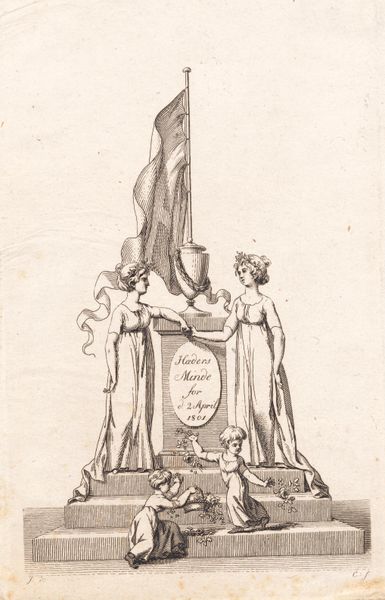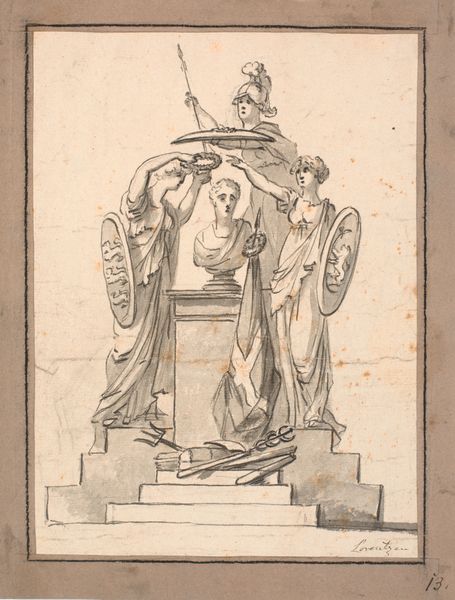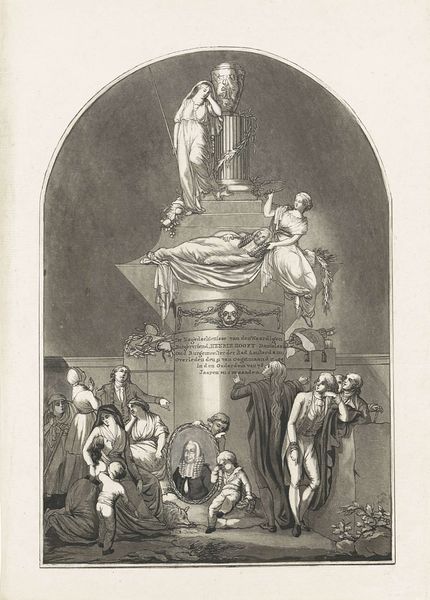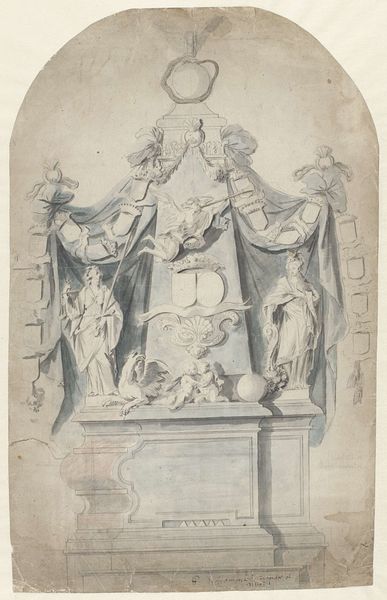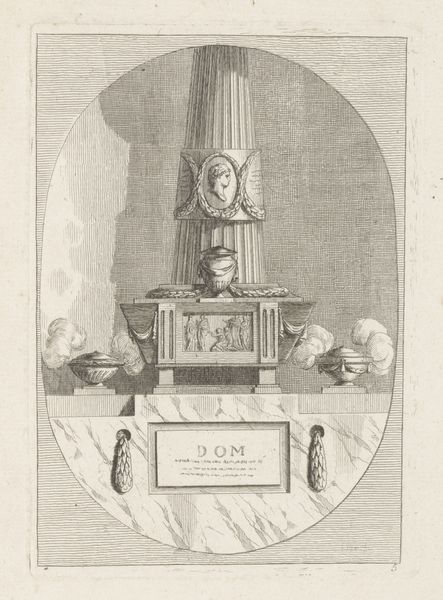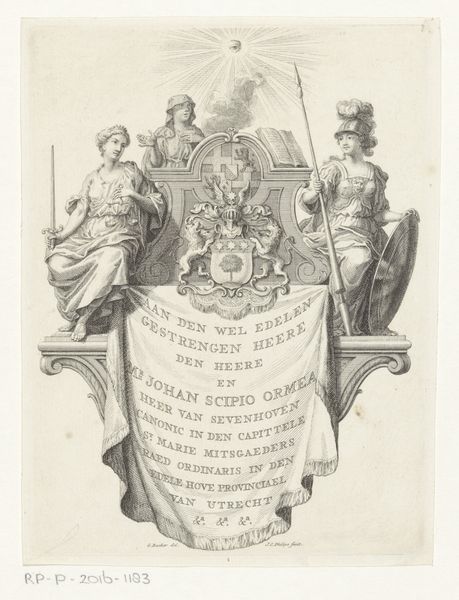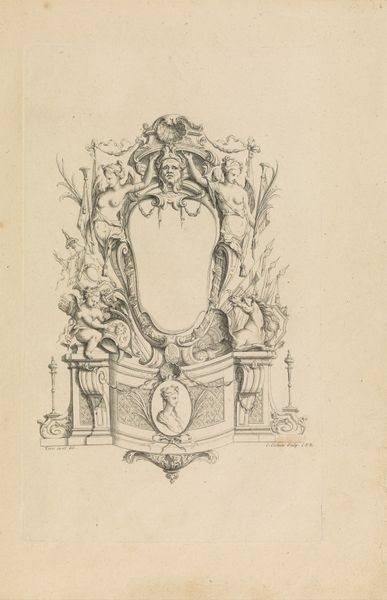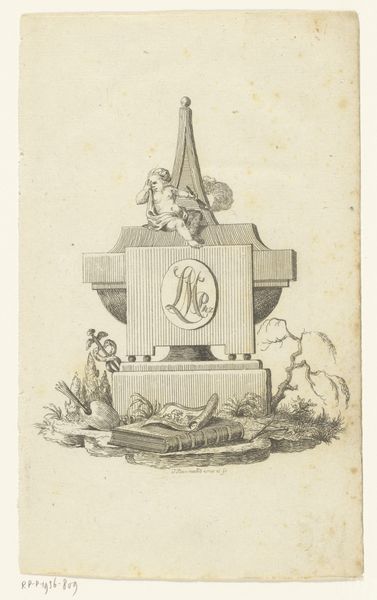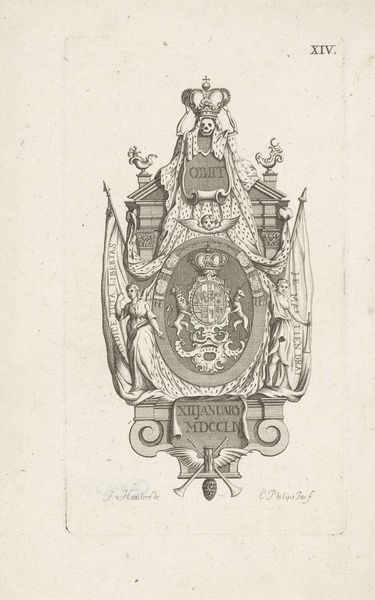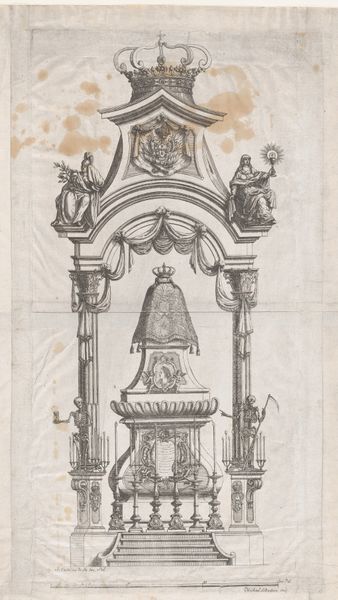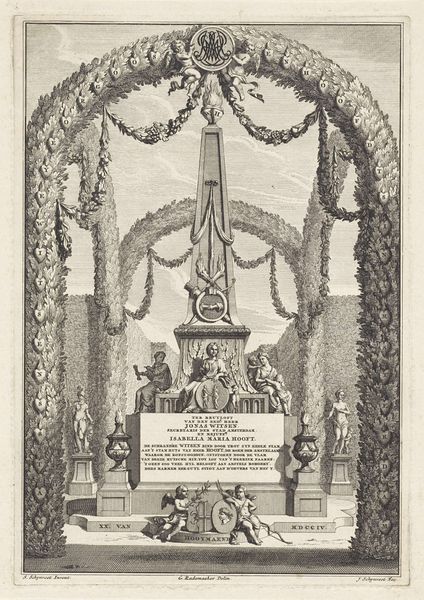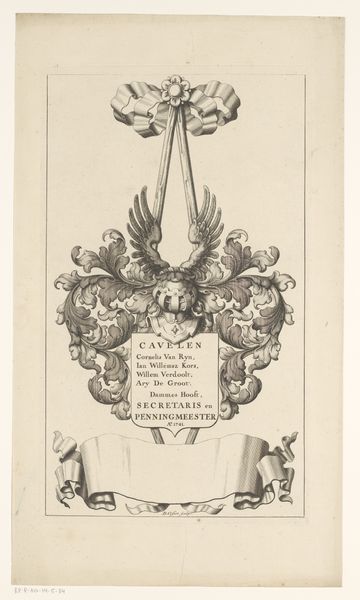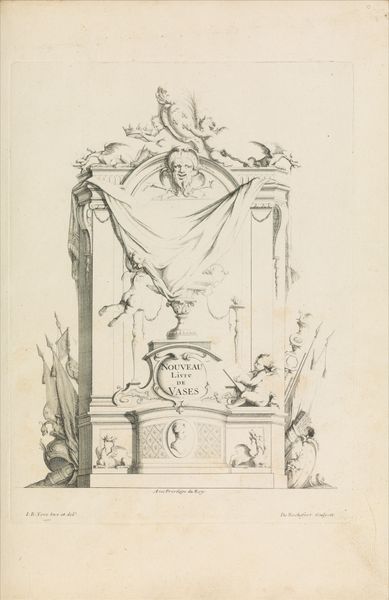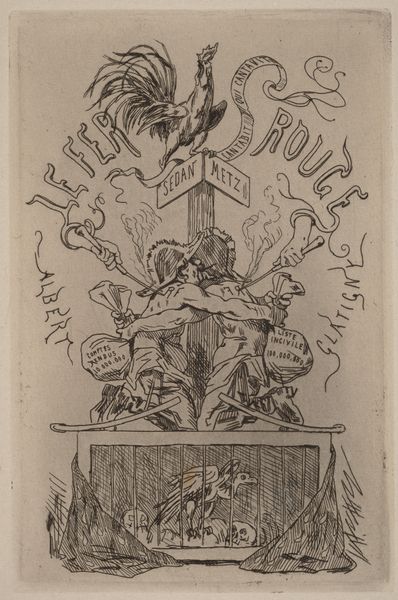
print, etching
#
allegory
# print
#
etching
#
landscape
#
figuration
#
line
#
history-painting
Dimensions: 214 mm (height) x 135 mm (width) (bladmaal), 199 mm (height) x 122 mm (width) (Plademål)
Curator: Let's turn our attention to "Hæders Minde for d. 2 April 1801" by J.F. Clemens, an etching that belongs to the Statens Museum for Kunst's collection. Editor: It strikes me immediately as rather somber, despite the children with flowers. The lines are precise but create a feeling of restraint and a somewhat melancholic atmosphere. Curator: The linear style is characteristic of etchings from this period. Notice the balanced composition; the central monument is flanked by the figures of draped women. The precise linework constructs forms through shadow and depth to underscore this sense of symmetry. Editor: Beyond the compositional elements, it's hard not to consider what's being commemorated here. April 2nd, 1801, marks the Battle of Copenhagen, a naval battle that occurred during the Napoleonic Wars. This print then is a clear construction of national memory and mourning, especially as Denmark had officially remained neutral until then. Curator: Precisely. The monument is the linchpin; it's both the structural and thematic support of the composition. Observe how the figures, particularly the women, are allegorical. It's less a literal depiction and more a symbolic representation of grief and remembrance. Editor: And who are these women mourning? Are they symbolic representations of Denmark, or perhaps the mourning mothers, wives, and daughters? It makes you wonder about the cost of these military events—these wars. There's this very constructed front of honor and remembrance that glosses over complex realities. Also, notice that no actual combatants are pictured, only the children are bringing the wreath— the new generation burdened with the old. Curator: A powerful reading. And the choice of etching, with its inherent linearity, further emphasizes the formal, almost sterile, nature of the commemoration. It prioritizes clarity and precision above perhaps a more emotionally expressive medium. Editor: Exactly. That sterility and formal presentation, while historically grounded, are loaded with a national, political project. Reflecting on this work then invites considerations about how historical events are presented, sanitized even, through art. Curator: An interesting interpretation. It invites us to ponder upon the distance of time, and reflect that memory can be captured within the boundaries of lines and forms. Editor: Yes, how loaded these depictions of historical events really are—who gets included, excluded, and how national narratives are visually constructed, for then and even for today.
Comments
No comments
Be the first to comment and join the conversation on the ultimate creative platform.
